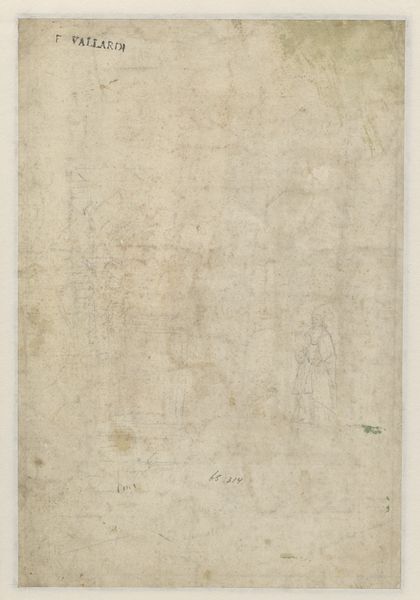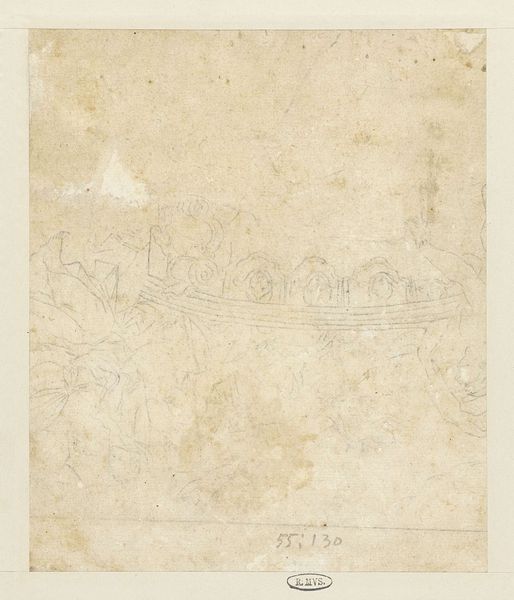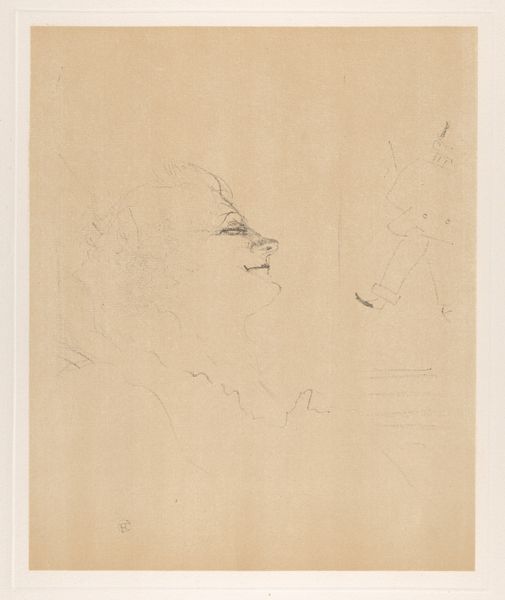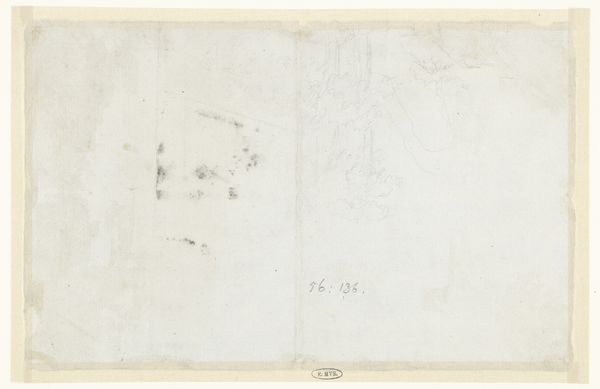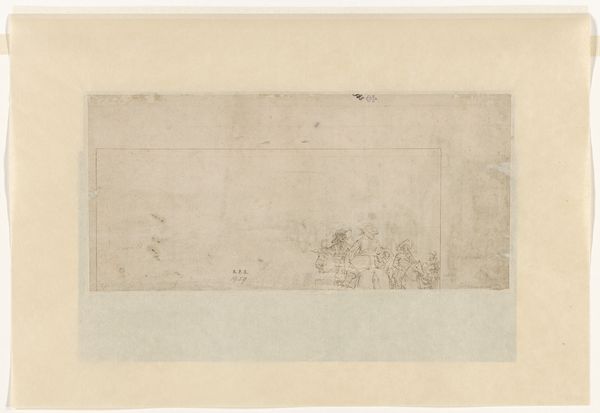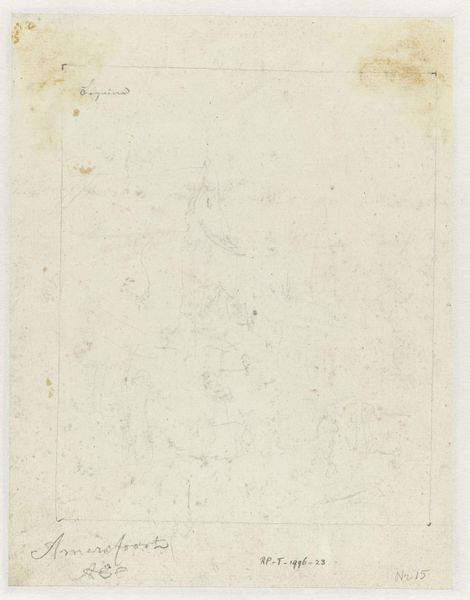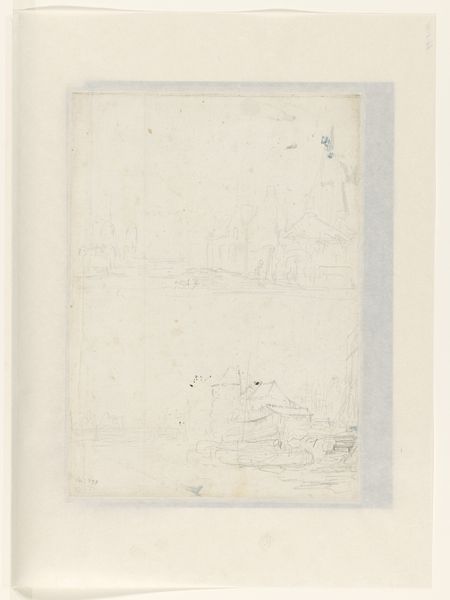
drawing, paper, ink, pencil
#
drawing
#
paper
#
ink
#
pencil
#
line
#
watercolor
Dimensions: 272 mm (height) x 221 mm (width) (bladmaal)
Curator: Today we're looking at "A column, yardstick," a drawing made with ink and pencil on paper sometime between 1556 and 1629, currently held at the SMK in Copenhagen. Editor: My first impression is one of almost austere geometry. There's an underlying grid, but it's very lightly sketched. What strikes you? Curator: The emphasis on the linear, definitely. The piece reveals an obsession with measurement and spatial organization. Note how the marks on top are calibrated against what seems like an architectural framework. This juxtaposition creates a certain tension. Editor: That’s intriguing. Looking at this, I see the very act of building a world represented through symbols. Rulers often symbolized governance, reason, and the ordering of society, as you said before, reflecting humanist ideals of controlling our environment, like a memento mori or theodolite in painted portraiture. The drawing implies those sentiments. Curator: Yes, you bring up a crucial point. We could even dissect this use of the rudimentary grid through the lens of structuralism, suggesting how language predetermines reality, as if the physical space itself has to submit to symbolic capture before being manifested. Editor: It appears someone tried to indicate the view, very faded on the right side of the drawing? It's almost a spectral cityscape or ship. It lends an ephemeral feeling to this rigid architecture. What cultural impact do you consider? Curator: Perhaps it’s a reference to scientific illustration and an increased fascination with perspective during the Renaissance. Look closely at the various, faintly marked points converging on implied vanishing lines; this may represent the shift to objective viewing. Editor: Thank you! That really offers new insight. As we wrap up, it makes me reflect how symbols operate to project meaning onto things through cultural transmission and interpretation. Curator: Indeed, this image speaks eloquently of visual art history as it uses structure and form to speak volumes regarding shifting perspectives, and that’s really impactful for me to observe today!
Comments
No comments
Be the first to comment and join the conversation on the ultimate creative platform.
